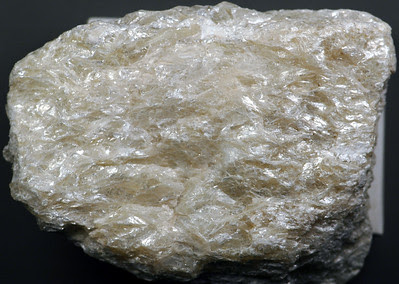The Influence of Talc in a Clay Body
I recently took an online workshop regarding clay body development. I was excited to hear what this persons thoughts were on it. He shared a lot of great information, but he said somethings I didn't agree on, he pointed out that it was absolutely pointless to use talc in a clay body. He created a recipe using talc verses a feldspar. Which meant he compared a clay body with 20% talc vs one with 20% feldspar, and not a surprise the talc clay body was considerable less mature, so he concluded that it was pointless to use. Let's take a quick look at talc and its application in clay bodies.
Talc (Steatite) is an interesting mineral, it is a soft material, 1 mohs hardness, has a greasy, soapy feel to it, (also known as soapstone,) and is a magnesium silicate hydrate. https://en.wikipedia.org/wiki/Talc
*image from: https://www.flickr.com/photos/jsjgeology/16921632302
Talc is not necessarily useless in clay bodies, because by adding it to the recipe it lowers the expansion, and can be used to achieve shock resistant clay bodies. In higher percentages it is indeed refractory and starts to melt starting around 800℃ up to 1500℃ or cone 17 ¹. Talcs' refractory nature can be used in making saggers and other refractories. Interestingly though, talc in small percentage, 1 - 3% acts like a flux.
To show you what I mean, I made up a clay body and added talc in increments of 1, 2, and 3% to find out how in smaller percentage talc can change a clay body's maturity. The clay body recipe was:
OM#4 Ball clay 30%,EP Kaolin 30%Flint Silica #90 15%Custer Feldspar 25%.
The table below shows you the absorption rate at cone 6 for this clay, starting at 0% talc up to 3% talc. Each increment of 1% talc lowered the porosity sequentially. By adding only 3% talc, I was able to get a 3.8% difference in absorption, then by adding no talc at all. Talc is not a direct substitute for feldspar but can be used in connection with it.
From this test, I would conclude that talc is rather useful in clay bodies. It acts as a flux in smaller percentages of 1 - 3%, and in higher amounts it creates a low-expansion refractory clay-body which have a wide range of uses. Albeit, some caution needs to be used with this mineral, as there have been reports of some health concerns from long term exposure.
1. https://nvlpubs.nist.gov/nistpubs/jres/15/jresv15n5p551_A1b.pdf




Comments
Post a Comment